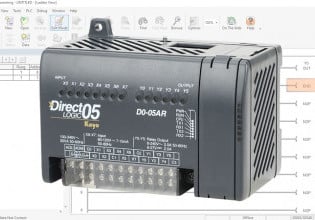T
Simplified description of the system:
We have a VFD driven raw water pump puping water into a filtration unit. There is a flowmeter and modulating valve at the intake of the filtration unit.
Current control strategy in the specifications is such that the operator enters a flow setpoint and the PLC adjusts the speed of the VFD to meet the flow setpoint into the filter. However, the PLC also modulates the valve at the filter intake to maintain the same entered flow setpoint.
So now we have one flow setpoint that controls the VFD and also modulates the intake valve.
This is not practical in the real world as the VFD and valve will fight each to maintain the setpoint.
But my question is will this current setup work?
We want to avoid making changes in the code as the project has turned political and we want to make as less change in the control narrative as possible.
What are the possible "quick and easy" changes that we could implement in the logic to make this work?
1. Ones that I can think of is make the valve full open/close and allow the VFD to control flow.
OR
2. introduce some large deadband in the program. (don't know how to do it and some direction will be useful).
Looking forward to your help.
Thanks
We have a VFD driven raw water pump puping water into a filtration unit. There is a flowmeter and modulating valve at the intake of the filtration unit.
Current control strategy in the specifications is such that the operator enters a flow setpoint and the PLC adjusts the speed of the VFD to meet the flow setpoint into the filter. However, the PLC also modulates the valve at the filter intake to maintain the same entered flow setpoint.
So now we have one flow setpoint that controls the VFD and also modulates the intake valve.
This is not practical in the real world as the VFD and valve will fight each to maintain the setpoint.
But my question is will this current setup work?
We want to avoid making changes in the code as the project has turned political and we want to make as less change in the control narrative as possible.
What are the possible "quick and easy" changes that we could implement in the logic to make this work?
1. Ones that I can think of is make the valve full open/close and allow the VFD to control flow.
OR
2. introduce some large deadband in the program. (don't know how to do it and some direction will be useful).
Looking forward to your help.
Thanks






